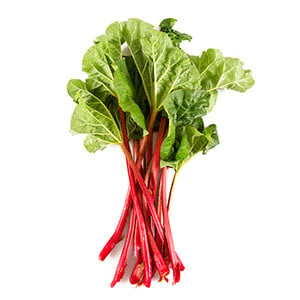Rhubarb

Rhubarb
Rheum rhabarbarum
Plant family
Knotweed family (Polygonaceae)
Season Overview
Propagating
Planting
Harvest
J
F
M
A
M
J
J
A
S
O
N
D
1ST YEAR
FOLLOWING YEARS
Details
Light requirement
Semi-shaded
Water requirement
Moist
Soil
Light (sandy)
Nutrient requirement
High
Plant distance
65 cm
Row spacing
90 cm
Seeding depth
2 cm
Instructions
The season for this plant is over. The following instructions are for the next season.
Mid of March
Propagating
Mid of March
Mulch
Every two Weeks
Beginning of May
Planting
Description
Rhubarb is a perennial, cold-resistant knotweed with bushy growth. From the second to third year, the stalks should traditionally be harvested by St. John's Day (June 24). This is due to the increase in oxalic acid content from June onwards, which is unhealthy in larger concentrations. The plant continues to grow through the summer so that it can regenerate its stores for a vigorous shoot next spring. Varieties differ in flesh color (red, green).
Origin:
Himalayan region
Growing tips
Medium-textured, deep, well-watered soils are best for this bushy, herbaceous plant. Rhubarb sprouts from root rhizomes in early spring. For propagation, individual root rhizomes are cut off and replanted. When the first flower sprouts appear, you should remove them to encourage vegetative growth. Remove stems from the root neck. Rhubarb can be harvested for 6-7 years, after which you should take a growing break of 6-7 years.
Companion Plants
Bean (Broad bean / Faba bean / Field bean)
Bean (Dwarf bean)
Bean (Runner bean)
Broccoli
Brussels sprouts
Cabbage (Cabbage)
Cabbage (Savoy cabbage)
Cauliflower
Collard greens (Kale)
Collard greens (Tuscan kale / Dinosaur kale / Palm tree kale)
Common marigold
Kohlrabi / German turnip / Turnip cabbage
Lettuce (Lamb's lettuce)
Lettuce (Lettuce)
Napa cabbage / Chinese cabbage
Pak Choi
Pea
Spinach (Summer)
Antagonistic Plants
Diseases
Angular leaf spot of cucumber
Black spot of roses
Red spot disease
Pests
Root knot nematodes